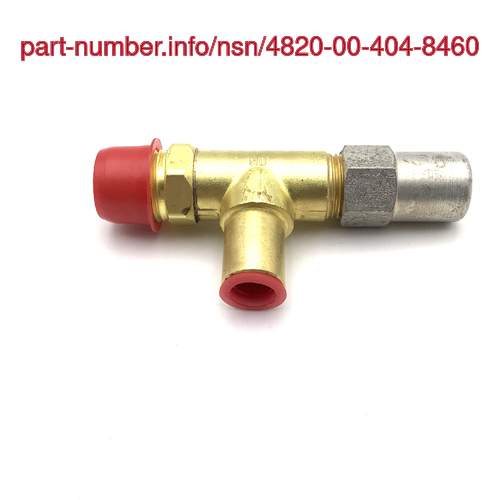4820004048460
4820-00-404-8460 Images
(for reference only)
Price Quote Get an up to date pricing and availability quote for this product. Order online or over the phone.
Quality Commitment
Serving our customers with quality and safety first.
- AS9120 Certified
- Audited supply chain
- ITAR Registered
- DDTC Registered
- HAZMAT Certified
- Customer service objectives
- Every product 100% inspected

4820-00-404-8460 Specification Set by the OEM (see RNCC code 3)
0.500in. 2nd end
RIGHT-Hand 2nd end
G46B plain (pipe) 2nd end
unthreaded internal tube 1st end
valve stem lock shield
14 2nd end
500.0 pounds per square inch single response
0.500in. 2nd end ⁓2-1/64"
0.500in. 1st end
94833-84015 drawing (this is the basic governing drawing, such as a contractor drawing, original equipment manufacturer drawing, etc.; excludes any specification, standard or other document that may be referenced in a basic governing drawing)
nptf 2nd end
Cross Reference Parts Part numbers that meet the specification outlined on this page and set by the OEM
Identification Item Identification Guide (IIG) and Item Name Code (INC)
Definition Definition of approved item name (AIN): "VALVE,ANGLE"
A valve with one inlet and one outlet connection with outlet flow at an angle to inlet flow. The flow is controlled by the action of a stem which lifts disks perpendicularly off the center axis of its seat. It may be inline or cartridge (manifold) design. Excludes valve (1), y; valve, stop-check; and cock, shutoff, screw stem.
4820-00-404-8460 Material Hazmat, Precious Metals, Criticality, Enviroment, and ESD
Indicates there is no data in the hmirs and the nsn is in a fsc not generally suspected of containing hazardous materials.
Precious metal content is unknown
The item does not have a nuclear hardened feature or any other critical feature such as tolerance, fit restriction or application.
Identification Codes
HMIC: Hazardous Material Indicator Code. A one position code that identifies a hazardous item.
PMIC: Precious Metal Indicator Code. A one position code which identifies items that have precious metals as part of their content. precious metals are those metals generally considered to be uncommon, highly valuable, and relatively superior in certain properties such as resistance to corrosion and electrical conductivity.
ESD: Electrostatic Discharge. Indicates if an item is susceptible to electrostatic discharge or electromagnetic interference damage. electrostatic discharge damage occurs when an accumulation of static electricity generated by the relative motion or separation of materials is released to another item by direct contact. electromagnetic interference damage occurs when an item comes into proximity with an electrostatic or magnetic field.
ENAC: Enviromental Attribute Code. Identifies items with environmentally preferred characteristics.
CRITL: Criticality Indicator Code. Indicates an item is technically critical by tolerance, fit, application, nuclear hardness properties, or other characteristics.






